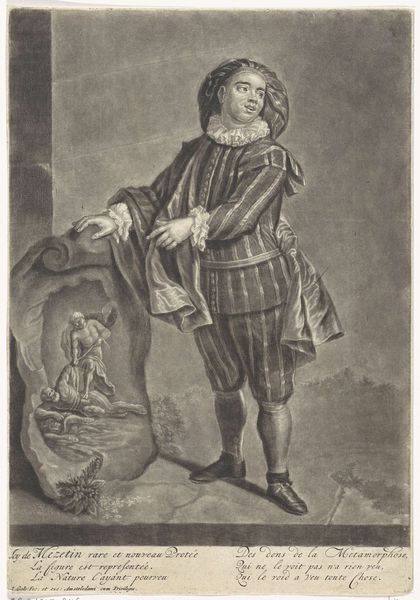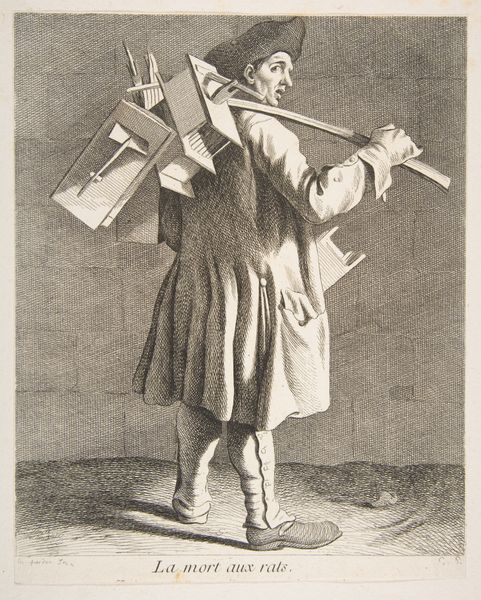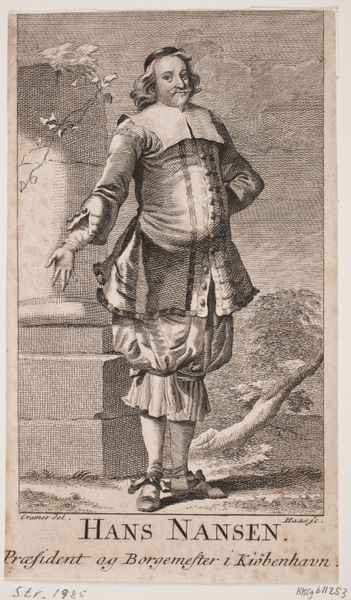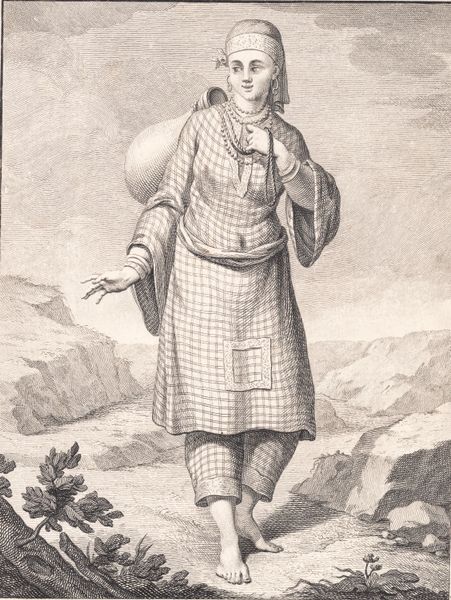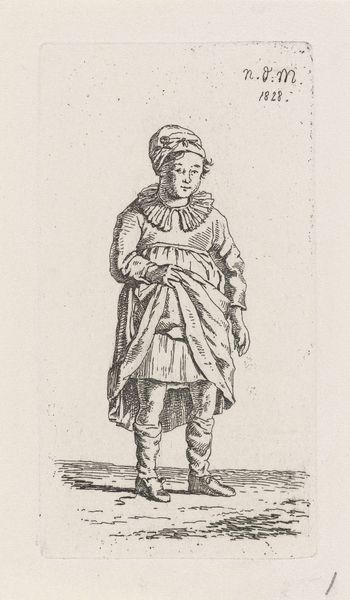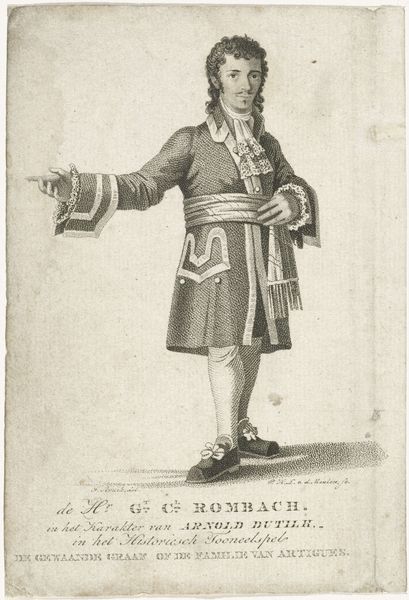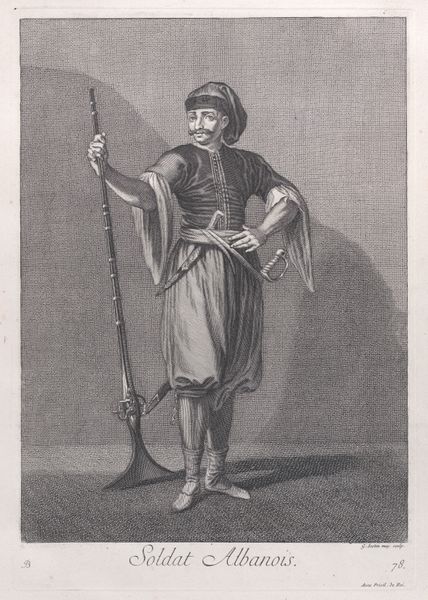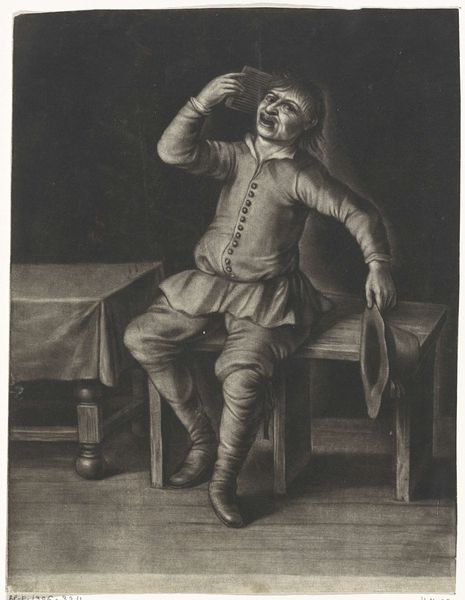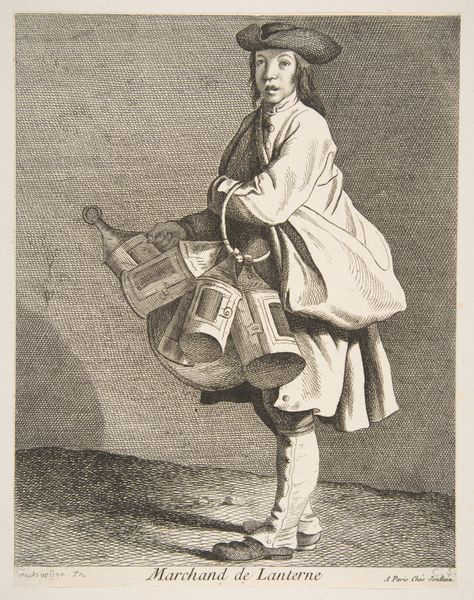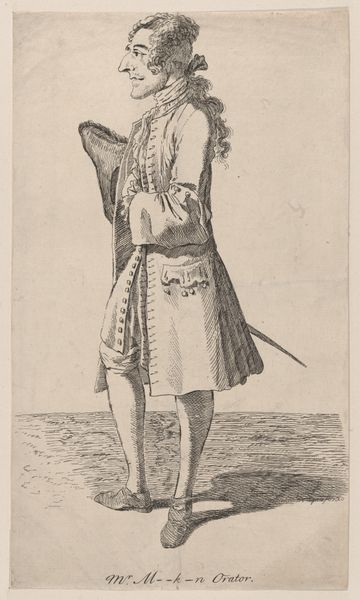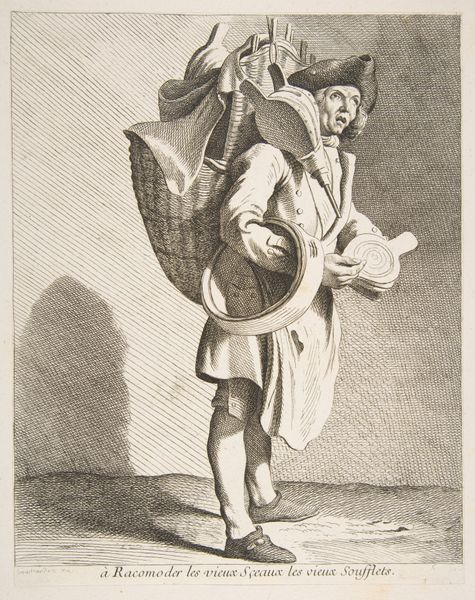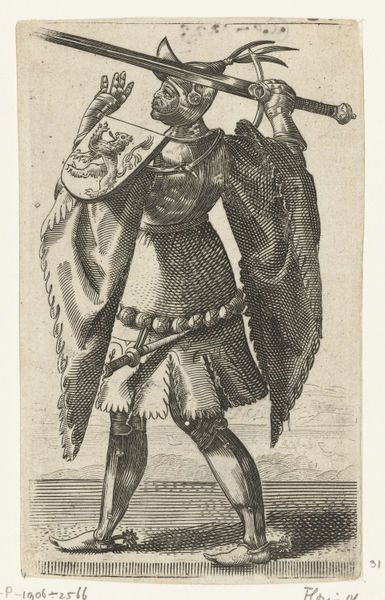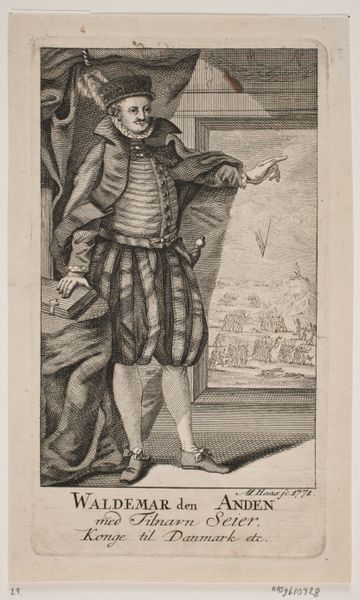
Grec des Isles de l'Archipel, joüant du Taboura, plate 70 from "Recueil de cent estampes représentent differentes nations du Levant" 1714 - 1715
0:00
0:00
drawing, print, engraving
#
portrait
#
drawing
#
baroque
# print
#
portrait reference
#
limited contrast and shading
#
men
#
portrait drawing
#
genre-painting
#
musical-instrument
#
remaining negative space
#
engraving
Dimensions: Sheet: 16 7/16 in. × 12 in. (41.8 × 30.5 cm) Plate: 14 × 9 3/4 in. (35.5 × 24.7 cm)
Copyright: Public Domain
Editor: This is "Grec des Isles de l'Archipel, joüant du Taboura," a print made between 1714 and 1715 by Jean Baptiste Vanmour. The subject is a man, presumably Greek, playing a stringed instrument. I'm struck by how straightforward the composition is, almost like an ethnographic study. What do you see in this piece? Curator: This image comes from a series intended to document different nations within the Levant, a region of immense cultural and political importance to Europe at the time. These "Recueil de cent estampes" prints circulated widely, shaping European understandings—or perhaps misunderstandings—of the Ottoman world. How do you think images like this contributed to the broader political climate? Editor: I hadn’t considered the political context. It's interesting to think about how this seemingly simple image could contribute to a larger narrative, potentially reinforcing stereotypes or shaping opinions about the "other." Curator: Exactly! Consider the role of the artist. Vanmour was a court painter for the Ottoman Sultan, meaning he occupied a very particular position, both observing and participating in Ottoman society. Do you think this context affected the portrayal of this Greek musician? Is it a neutral depiction, or is something else at play? Editor: I imagine his position at court influenced his perspective. Maybe there’s an element of exoticism or perhaps an attempt to categorize and contain the diversity of the Ottoman Empire. Curator: Precisely. It's not just a picture of a man with a musical instrument, is it? It speaks to power dynamics, cultural exchange, and the very act of representation within a specific historical moment. I hadn’t thought about that. Thank you. Editor: I completely agree. Reflecting on it further has shown how complex these apparently simple prints are and has revealed underlying historical and political meanings within Vanmour’s work.
Comments
No comments
Be the first to comment and join the conversation on the ultimate creative platform.
